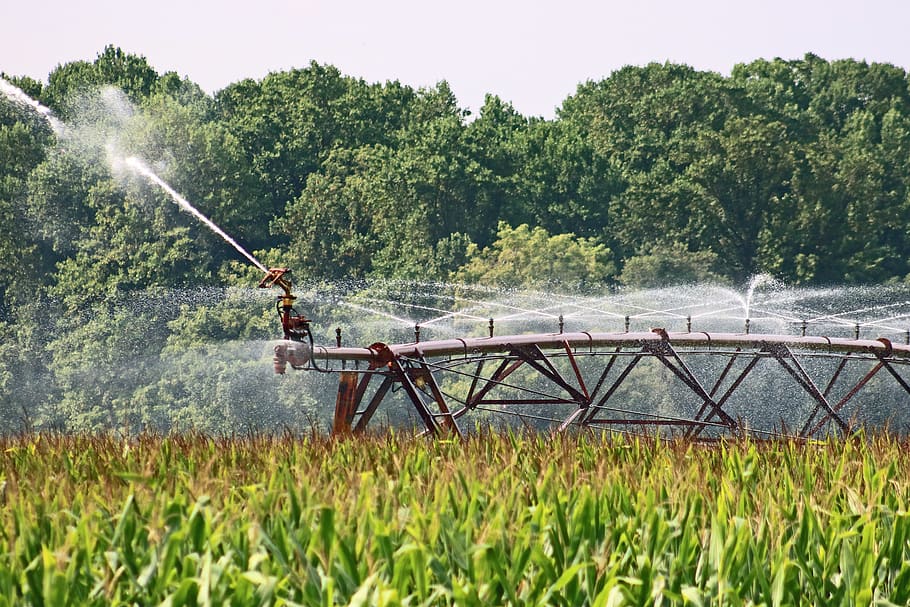Irrigation
Contents |
[edit] Introduction
Irrigation is the controlled watering of land by artificial means. It is primarily used to sustain crop growth, cool livestock, suppress weeds or protect land from freezing. It can also be used as a control measure in areas where lack of consistent water supply can have a negative impact on the landscape.
Irrigation has also been used for non-agricultural purposes such as sewage disposal and dust suppression.
[edit] History
As an agricultural tool, irrigation has been used around the world for thousands of years. The earliest evidence of its existence was found in Iran; this system is believed to date from 6000 BC.
In Egypt, significant irrigation measures were built around 3000 BC to control the level of the Nile. In addition to supplying water to crops, this irrigation project also involved the construction of other complex water engineering measures.
Irrigation was used extensively in ancient civilisations in China, India, Sri Lanka, Korea and the Americas.
[edit] Types of irrigation
There are several methods of irrigation, which vary in how the water is supplied. Some of the most common types include:
- Surface irrigation (also known as gravity irrigation).
- Micro-irrigation (also referred to as localised irrigation, low volume irrigation, trickle irrigation or drip irrigation).
- Sprinkler irrigation (also referred to as overhead irrigation).
- Subirrigation (or subsurface irrigation).
There are several water sources that can be used for irrigation purposes. These include:
- Groundwater (from springs or taken from wells).
- Surface water (taken from rivers, lakes or reservoirs).
- Treated water (including wastewater, desalinated water or drainage water).
- Floodwater harvesting (referred to as spate irrigation) or fog collection.
[edit] Related articles on Designing Buildings Wiki
Featured articles and news
Infrastructure that connect the physical and digital domains.
Harnessing robotics and AI in challenging environments
The key to nuclear decommissioning and fusion engineering.
BSRIA announces Lisa Ashworth as new CEO
Tasked with furthering BSRIA’s impressive growth ambitions.
Public buildings get half a million energy efficiency boost
£557 million to switch to cleaner heating and save on energy.
CIOB launches pre-election manifesto
Outlining potential future policies for the next government.
Grenfell Tower Inquiry announcement
Phase 2 hearings come to a close and the final report due in September.
Progress from Parts L, F and O: A whitepaper, one year on.
A replicated study to understand the opinion of practitioners.
ECA announces new president 2024
Electrical engineer and business leader Stuart Smith.
A distinct type of countryside that should be celebrated.
Should Part O be extended to existing buildings?
EAC brands heatwave adaptation a missed opportunity.
Definition of Statutory in workplace and facilities management
Established by IWFM, BESA, CIBSE and BSRIA.
Tackling the transition from traditional heating systems
59% lack the necessary information and confidence to switch.
The general election and the construction industry
As PM, Rishi Sunak announces July 4 date for an election.
Eco apprenticeships continue help grow green workforce
A year after being recognised at the King's coronation.
Permitted development rights for agricultural buildings
The changes coming into effect as of May 21, 2024.






















